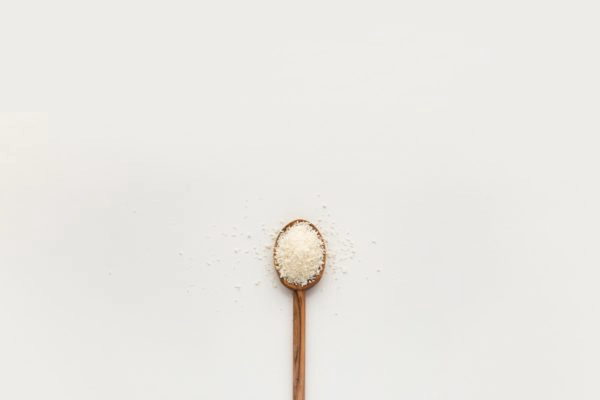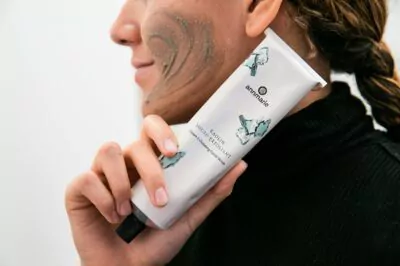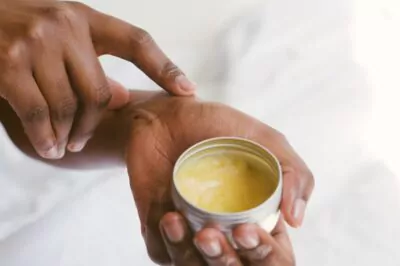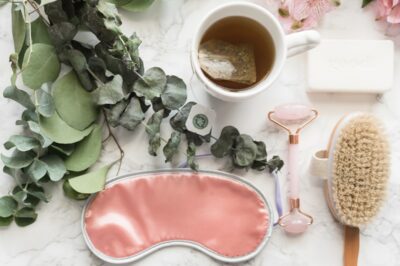Table of Contents[Hide][Show]
Even if you always remember to take off your makeup and wear SPF to protect your skin from those harmful UVA/UVB rays, all of your efforts will be fruitless if you’re not remembering this one crucial step: exfoliating.
When going over a client’s regimen, oftentimes either an exfoliator isn’t used at all, or it simply isn’t being used correctly. Sure, every phase in your skin care routine works in tandem with the other, yet exfoliating can make or break your skin care goals.
What is exfoliation and why does it matter?
To be clear, exfoliation is the removal of dead skin cells that are harboring on the surface. It’s important that these defunct cells be removed since the regeneration process slows down with age.
So, not only does it take longer to generate new cells, but the body is also slower at getting rid of old ones—the cycle for the younger set is around three to four four weeks (approximately two for babies), but it can take up to 40-60 days for older adults.
What happens when you don’t exfoliate?
Neglecting to exfoliate your skin leads to a build-up of dead skin cells, resulting in large pores, breakouts, dullness, a lackluster/uneven complexion, and the inability for products such as serums and moisturizers to penetrate deeply into the skin so they can effectively work to treat your skin care concerns.
However, committing to regular exfoliation can skin a fresh and revived look that’s brighter and more even while removing impurities from makeup, dirt, oil, and pollution. Not sure where to start or whether or not you’ve been exfoliating correctly?
Read on for the best ways to master this oh-so-crucial step.
Different types of exfoliators (and how to use them)
There are two different types of exfoliants: physical (think a scrub) or chemical. While the end goal of encouraging revitalized skin and removing impurities is the same, they work differently and aren’t equally efficient.
Physical exfoliation
The most basic form of physical exfoliation for home use is a mechanical scrub. Suspended in a cream or gel, synthetic or natural particles work to slough off dead skin cells while giving your face a glowing look. A slightly more elevated version will also contain an enzyme to dissolve while the particles sweep.
More sophisticated (and effective) forms include microdermabrasion and dermaplaning, but you’re going to have to book a treatment with a doctor or licensed esthetician. Things you’ll want to discuss prior to treatment are skin type and medical history.
Microdermabrasion
With a wand in hand, microdermabrasion relies on miniscule crystals to exfoliate dead cells (which are sucked up via a mini-vacuum), encourage revitalized skin, minimize the appearance of large pores, and brighten your look.
For the best results, you’re going to want to establish a routine—especially in the beginning. For example, weekly treatments for 6-12 weeks depending on your skin type before morphing into monthly sessions.
Dermaplaning
Dermaplaning, on the other hand, is conducted with a scalpel-like tool that exfoliates the top layer of dead skin. Since it also eliminates peach-fuzz hairs and is more gentle than microdermabrasion, it’s considered a more desirable choice (it’s my preference, too!)
Again, dependent up skin type, dermaplaning can be conducted every three to four weeks—enough time to get rid of approximately a month’s worth of dead cells in one swoop.
Chemical exfoliation
While the name “chemical” sounds severe, an exfoliant of this nature entrusts the help of alpha and beta hydroxy acids to dissolve the intercellular glue that’s holding on to dead skin cells—which, in turn, eliminates them.
Depending on the formula and strength, both AHAs and BHAs can exfoliate on a deeper level, but in a gentle, non-irritating capacity.
Benefits of chemical exfoliation
Lastly, chemical exfoliants have additional benefits, to include reducing the appearance of fine lines and wrinkles, inspiring rejuvenated skin, and minimizing the appearance of large pores.
You can either opt to receive professional peels (the stronger option) at a doctor’s office or by a licensed esthetician, or incorporate alpha/beta products into your skin care routine. Regardless of which you choose, conduct a patch test to ensure you don’t have a reaction.

Common exfoliation mistakes
Overdoing it.
You’re not going to get ahead by scrubbing or peeling your face on a daily basis. If anything, you’ll cause irritation and dryness. Frequency depends on your skin type—see the next mishap.
Not choosing the correct exfoliant for your skin type/condition
If you’re working with a doctor or licensed esthetician (especially on the chemical or in-house mechanical side), get yourself on a routine that works for your skin type.
For example, an elderly individual with thinner skin would not want to use an abrasive scrub four times a week any more than someone with an ultra-sensitive complexion (think visible capillaries or a skin condition like rosacea) would want to start a microdermabrasion routine.
Using a heavy hand
When it comes to at-home mechanical exfoliants (1-3 times a week), you need not use a heavy hand to get the job done. Again, only irritation will ensue. If anything that matters more here, is the length of time you spend exfoliating.
Many people only swirl the product around for 15 seconds, but that isn’t going to cut it. Instead, go for a full minute (think about how long an esthetician takes when you get a facial), using light, circular motions and concentrating on areas of extreme dryness.
Exfoliating with a scrub comprised of irregularly shaped particles
I’m talking about fruit pits, shells, seeds, and anything else that has the potential to create micro-tears in the skin. Look for products that contain spherical elements (think that can sweep—not scrape—off the dead cells) or finely ground particles that are deemed as skin safe.
SOURCES
“Dermabrasion/Dermaplaning,” Health Encyclopedia, https://www.urmc.rochester.edu/encyclopedia/content.aspx?ContentTypeID=85&ContentID=P01108
“Microdermabrasion,” MedicineNet.com, https://www.medicinenet.com/microdermabrasion/article.htm
“Dual Effects Of Alpha-Hydroxy Acids On The Skin,” MDPI.com, Molecules 2018,
https://www.mdpi.com/1420-3049/23/4/863/htm
“Evaluate Before You Exfoliate,” American Academy of Dermatology, Inc., March 2015, https://www.aad.org/media/news-releases/evaluate-before-you-exfoliate








Leave a Reply